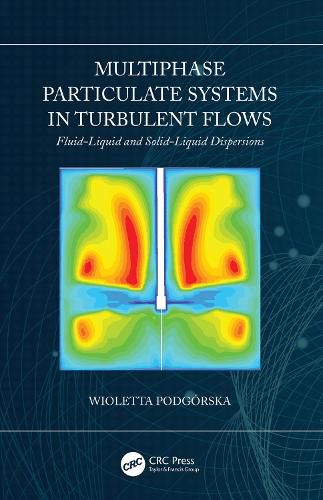Readings Newsletter
Become a Readings Member to make your shopping experience even easier.
Sign in or sign up for free!
You’re not far away from qualifying for FREE standard shipping within Australia
You’ve qualified for FREE standard shipping within Australia
The cart is loading…






Multiphase Particulate Systems in Turbulent Flows: Fluid-Liquid and Solid-Liquid Dispersions provides methods necessary to analyze complex particulate systems and related phenomena including physical, chemical and mathematical description of fundamental processes influencing crystal size and shape, suspension rheology, interfacial area of drops and bubbles in extractors and bubble columns. Examples of mathematical model formulation for different processes taking place in such systems is shown. Discussing connections between turbulent mixing mechanisms and precipitation, it discusses influence of fine-scale structure of turbulence, including its intermittent character, on breakage of drops, bubbles, cells, plant cell aggregates. An important aspect of the mathematical modeling presented in the book is multi-fractal, taking into account the influence of internal intermittency on different phenomena.
Key Features
Provides detailed descriptions of dispersion processes in turbulent flow, interactions between dispersed entities, and continuous phase in a single volume
Includes simulation models and validation experiments for liquid-liquid, gas-liquid, and solid-liquid dispersions in turbulent flows
Helps reader learn formulation of mathematical models of breakage or aggregation processes using multifractal theory
Explains how to solve different forms of population balance equations
Presents a combination of theoretical and engineering approaches to particulate systems along with discussion of related diversity, with exercises and case studies
$9.00 standard shipping within Australia
FREE standard shipping within Australia for orders over $100.00
Express & International shipping calculated at checkout
Multiphase Particulate Systems in Turbulent Flows: Fluid-Liquid and Solid-Liquid Dispersions provides methods necessary to analyze complex particulate systems and related phenomena including physical, chemical and mathematical description of fundamental processes influencing crystal size and shape, suspension rheology, interfacial area of drops and bubbles in extractors and bubble columns. Examples of mathematical model formulation for different processes taking place in such systems is shown. Discussing connections between turbulent mixing mechanisms and precipitation, it discusses influence of fine-scale structure of turbulence, including its intermittent character, on breakage of drops, bubbles, cells, plant cell aggregates. An important aspect of the mathematical modeling presented in the book is multi-fractal, taking into account the influence of internal intermittency on different phenomena.
Key Features
Provides detailed descriptions of dispersion processes in turbulent flow, interactions between dispersed entities, and continuous phase in a single volume
Includes simulation models and validation experiments for liquid-liquid, gas-liquid, and solid-liquid dispersions in turbulent flows
Helps reader learn formulation of mathematical models of breakage or aggregation processes using multifractal theory
Explains how to solve different forms of population balance equations
Presents a combination of theoretical and engineering approaches to particulate systems along with discussion of related diversity, with exercises and case studies